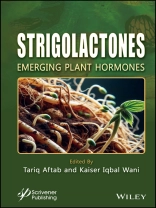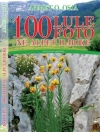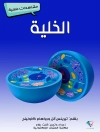This book is a comprehensive guide to strigolactones’ role in plant biology, growth, and sustainable agriculture.
Strigolactones, a fascinating and rapidly evolving class of plant hormones, have garnered significant attention in plant biology over the past decade. Initially discovered for stimulating the germination of parasitic plants, strigolactones are now recognized as key regulators of numerous plant processes, including growth, development, and response to environmental stresses. Their multifaceted nature and wide-ranging impact on plant physiology make strigolactones a critical study area for researchers aiming to enhance crop yield, resilience, and overall agricultural productivity.
This edited volume provides a comprehensive overview of the current state of knowledge on strigolactones, exploring their biosynthesis, signaling mechanisms, and practical applications in agriculture. The book collects contributions from leading experts in the field, offering a diverse and in-depth perspective on the various roles that strigolactones play in plant biology.
The chapters in this volume cover a broad spectrum of topics, from the molecular and genetic basis of strigolactone biosynthesis to their interactions with other phytohormones and environmental factors. The book examines the regulatory functions of strigolactones in plant architecture, including shoot branching, root development, and leaf senescence, as well as their involvement in stress responses such as drought, salinity, and pathogen attack. Also highlighted are recent advancements in understanding strigolactone signaling pathways and the potential for genetic engineering to manipulate these hormones for crop improvement.
Audience
Plant biologists, agronomists, horticulturists, and agriculture industry professionals studying plant development to address agricultural challenges.
Table of Content
Preface xiii
1 Strigolactones: Journey from Rhizospheric Chemoattractants to Plant Growth Regulators 1
Kaiser Iqbal Wani, M. Naeem and Tariq Aftab
1.1 Introduction 2
1.2 Brief History of Strigolactones 3
1.3 What is the Origin of the Name Strigolactone? 5
1.4 Diverse Strigolactone Functions: From Single-Celled Alga to Terrestrial Plants 5
1.5 Strigolactones in Ferns and Mosses: Rhizosphere Signals or Phytohormones? 6
1.6 Agricultural Loss and Root Parasitic Plants 7
1.7 Strigolactones and Agriculture: Why Do They Hold the Key? 9
References 9
2 Nature, Structural Diversity, Biosynthetic Pathway, and Strigolactone Transport in Plants 13
Ishrat Mehmood, Kaiser Iqbal Wani and Tariq Aftab
2.1 Introduction 14
2.2 Chemical Nature of Strigolactones 15
2.3 Naming Protocol for Strigolactones 17
2.4 Natural Diversity of Strigolactones 18
2.4.1 Canonical Strigolactones 20
2.4.2 Non-Canonical Strigolactones 21
2.5 Biosynthetic Pathway of SLs 22
2.6 Strigolactone Transport 25
2.6.1 Movement of SL from Root to Shoot 25
2.6.2 Transport of SL via ABCG/PDR Pathway 27
2.7 Conclusion 28
References 29
3 Unveiling the Strigolactone Signaling Pathway: From Receptors to Responses 35
Rachel Helmich
3.1 Introduction 36
3.2 The Strigolactone Perception 38
3.3 Strigolactone Signal Transduction 43
3.4 Transcriptional Regulation 48
3.5 Environmental Factors Modulate Strigolactone Signaling 51
3.6 Applications and Future Perspectives 54
3.7 Challenges and Unanswered Questions in Strigolactone Research 58
3.8 Conclusion 59
References 60
4 Diverse Roles of Strigolactones in Plant Growth and Development: Shaping Above- and Below-Ground Architecture 69
Alisha Hussain, Kaiser Iqbal Wani and Shahla Faizan
4.1 Introduction 69
4.2 The Contribution of Strigolactones to Shoot Development 70
4.2.1 Bud Activation Dynamics in Arabidopsis via Auxin–Strigolactone Interplay 71
4.3 Role of Strigolactones in Regulating Shoot Secondary Growth 73
4.4 Root Development in Plants: Potential Role of Strigolactones 75
4.4.1 Primary Root Development 75
4.4.2 Lateral Root Initiation and Development 76
4.4.3 Root Hair Elongation 77
4.4.4 Adventitious Root Formation 78
4.4.5 Root Development in Response to Nitrogen and Phosphate Deficiencies 78
4.4.6 Strigolactone and Auxin Interplay During Root Development 79
4.4.7 Strigolactone and Cytokinin Interplay During Root Development 80
4.5 Role in Leaf Senescence 80
4.6 Conclusion 81
References 81
5 Regulation of Phosphorus Nutrition in Tomato Plants: Unveiled Roles of Strigolactones 89
Veronica Santoro, Michela Schiavon, Cristina Prandi and Luisella Celi
5.1 Introduction 90
5.2 Strigolactone Chemistry and Biosynthesis 92
5.2.1 Structural Features and Classifications of Natural SLs 92
5.2.2 Synthetic Strigolactones 93
5.2.3 Biosynthetic Pathway 94
5.3 The SL Signaling Pathway 94
5.4 Function of Strigolactones in Tomato Plants: Emphasis on Phosphorus Nutrition 97
5.5 Conclusions 101
References 102
6 Strigolactones’ Role in Heat and Saline Stress Tolerance in Horticultural and Field Crops 109
Juan Pablo Rodriguez, Jose Delatorre Herrera, Luisa Bascuñán and Enrique Ostria
6.1 What are Strigolactones 110
6.1.1 Endogenous Production Under Abiotic Stress 111
6.1.2 Exogenous Use to Alleviate Abiotic Stress 113
6.2 Production, Role, and Understanding of Strigolactones in Alleviating Heat Stress in Horticultural and Field Crops 117
6.2.1 Morpho-Physiological Responses of Plants to Strigolactones 119
6.2.2 Biochemical Attributes of Strigolactones in Alleviating Heat Stress in Horticultural and Field Crops 120
6.2.3 Molecular Response of Strigolactones in Alleviating Heat Stress in Horticultural and Field Crops 121
6.3 Production, Role, and Understanding of Strigolactones to Alleviate Salinity Stress in Horticultural and Field Crops 122
6.3.1 Morpho-Physiological Responses of Plants 122
6.3.2 Biochemical Responses at the Plant Level 123
6.3.2.1 Ion Imbalance 123
6.3.2.2 Osmotic Imbalance 124
6.3.3 Molecular Response Level 124
6.3.3.1 Strigolactones and Salinity 124
6.4 Conclusions and Future Perspectives of Strigolactones’ Use for Alleviating Stress in Plants 127
References 127
7 Role of Strigolactones in Heavy Metal Tolerance: A Case Study on Cadmium 137
Ishrat Mehmood, Kaiser Iqbal Wani and Tariq Aftab
7.1 Introduction 138
7.2 Cadmium Toxicity on Plants 139
7.2.1 cd Toxicity on Growth and Development 139
7.2.2 cd Toxicity Induces Oxidative Damage 140
7.2.3 Impaired Photosynthetic and Respiratory Activity 141
7.2.4 cd Toxicity on Nutrient Uptake and Plant–Water Relations 142
7.2.5 cd Toxicity on Seed Germination 142
7.2.6 cd Toxicity on Amino Acids and Proteins 143
7.3 Strigolactone-Mediated Cadmium Tolerance 144
7.3.1 Strigolactones Enhance Cd Tolerance by Boosting Antioxidant Defense Mechanisms 144
7.3.2 Regulatory Role of SLs in Photosynthesis for Improving Cadmium Tolerance 146
7.3.3 Potential Role of SLs in Improving NO Signaling Under Cadmium Stress 147
7.3.4 Potential Role of SLs in Regulating Root and Shoot Architecture Under Cadmium Stress 148
7.4 Future Perspectives and Challenges of SLs for Agricultural Practices and Environmental Sustainability 149
7.5 Conclusion 151
References 151
8 Strigolactone Interplay with Other Phytohormones Under Stressed and Normal Conditions 161
Ishrat Mehmood, Kaiser Iqbal Wani and Tariq Aftab
8.1 Introduction 162
8.2 Role of SLs in Abiotic Stress Tolerance 162
8.2.1 SLs During Nutrient Starvation 163
8.2.2 SLs During Drought Stress 165
8.2.3 SLs During Salinity Stress 166
8.2.4 SLs During Light Stress 168
8.2.5 SLs During Heat Stress 169
8.2.6 SLs During Chilling Stress 170
8.2.7 SLs During Heavy Metal Stress 171
8.3 Interplay of SLs with Other Phytohormones 172
8.3.1 Crosstalk Between SLs and Abscisic Acid 172
8.3.2 Interplay of SLs with Jasmonic Acid 173
8.3.3 SLs and Salicylic Acid Crosstalk 174
8.3.4 Integration of SLs with Ethylene Signaling 174
8.3.5 Strigolactones and Gibberellins 176
8.3.6 Cross-Talk Between SLs and Auxins 177
8.3.7 Emerging Perspectives on SLs and Cytokinins 178
8.4 Future Directions and Implications for Agriculture 180
8.5 Conclusion 181
References 181
9 Strigolactone Analogs: Synthesis, Structural Features and Biological Activity 193
Roheela Ahmad, Pirzada Mohammad Haris, Zubair Altaf Reshi, Tahir Ahmad Sheikh, Ayman Javed and Inayat Mustafa Khan
9.1 Introduction 194
9.2 Synthesis of Natural SLS 195
9.2.1 Introduction to Synthesis 195
9.2.2 Attachment of the D-Ring 196
9.2.3 Modification of the D-Ring and Side Chains 196
9.2.4 Examples of Total Synthesis 196
9.2.5 Lessons Learned from Total Synthesis 200
9.3 Structures of Strigolactones 201
9.3.1 Essential Structural Features and Structural Diversity 201
9.4 Biological Activity of Strigolactones 203
9.4.1 Germination Stimulation Activity 203
9.4.2 Hyphal Branching 204
9.4.3 Shoot Branching Inhibition 204
9.5 Conclusion 205
References 205
10 Karrikin-Related Effects on Plant Development, Stress Tolerance, and Beyond 211
Tamás Bodor, Gábor Fejes, Dóra Kondak, Selahattin Kondak, Réka Szőllősi and Zsuzsanna Kolbert
10.1 Introduction 212
10.2 Direct KAR-Associated Effects on Plants 215
10.2.1 Promotion of Seed Germination and Seedling Growth in Healthy Plants 215
10.2.2 Amelioration of Abiotic Stress-Related Damages 219
10.2.2.1 Drought Stress 219
10.2.2.2 Temperature Stresses 221
10.2.2.3 Salinity 222
10.2.2.4 Heavy Metals 223
10.2.3 Amelioration of Biotic Stress-Induced Damages 223
10.3 Indirect KAR-Associated Effects on Plants 224
10.4 Smoke Water as a Promising Agent for Agricultural Applications 225
10.5 Conclusions and Perspectives 228
Acknowledgments 228
References 228
11 Strigolactones: Key Phytohormones in Plant–Microbe Interactions and Development 235
Asif Hussain Hajam and Gausiya Bashri
11.1 Introduction 236
11.2 Identification of SLs as Signaling Molecules in AM Symbiosis 237
11.3 SL Perception by AM Fungi 238
11.4 Influence of SLs on AM Fungi at the Cellular and Molecular Levels 238
11.5 SLs and AM Fungi Mediate Root Development 239
11.6 Impact of AM Fungi on Nutrient Acquisition (Particularly Phosphate) and Plant Growth 241
11.7 AM Symbiosis: Serving as a Biofertilizer and Biocontrol Agent 243
11.8 Interactions of SL with Non-AM Fungi 244
11.9 Strigolactones and Root Nodule Symbiosis 245
11.10 Effect of SLs on Nodule Number (Quantity) 247
11.11 Impact of SLs on Rhizobia 249
11.12 Future Directions and Conclusion 250
References 252
12 Strigolactones and Control of Parasitic Weeds 261
Sonal Jain, Rahul Kumar, Divya Gunsola, Sanja ?ivković, Tanja Vasić, Sourav Chattaraj, Somya Sinha, Prateek Gururani, Shraddha Bhaskar Sawant, Guerra Sierra B.E., Wiem Alloun and Debasis Mitra
12.1 Introduction 262
12.2 What are SLs? 263
12.2.1 Stimulation of Seed Germination 263
12.2.2 Inhibition of Shoot Branching 263
12.2.3 Influence on Root Development 264
12.2.4 Response to Stress 264
12.3 Phenomena of Host–Parasitic Plant Interaction 265
12.4 SL–Carotenoid/Biosynthetic Pathway for Stimulation 267
12.4.1 The Role of Carotenoid 267
12.4.2 Isomerization by D 27 267
12.4.3 Cleavage by CCD7 and CCD 8 267
12.4.4 Oxidation by Cytochrome P450 Enzymes 267
12.4.5 LBO and Unknown Enzymes 268
12.5 Karrikins 268
12.6 Exploring Various Strategies for Controlling Parasitic Weed Infestations 268
12.6.1 Involvement of SL Biosynthesis Inhibitors 268
12.6.2 Genetic Manipulation 269
12.6.3 Application of Synthetic SLs, Mimics, and Analogues/Suicidal Germination Strategy for Parasitic Weed Control 270
12.7 Impact of SL Application on Future Scientific Research and Agriculture 271
12.8 SL Functions 275
12.9 Conclusion 275
References 276
13 Strigolactones and Plant Defense: Protection Against Pests and Pathogens 281
Bonia Francis, C. T. Aravindakumar and Sibu Simon
13.1 Introduction 282
13.2 Biotic Stresses in Plants 283
13.3 Biotic Stress-Mediated Defense Mechanism in Plants 284
13.4 Strigolactone-Mediated Defense Against Pathogens 288
13.5 Strigolactone-Mediated Defense Against Pests 290
13.6 Strigolactone-Mediated Plant Defense Mechanism 290
13.7 Conclusion and Future Perspective 292
Acknowledgment 292
References 292
Index 301
About the author
Tariq Aftab, Ph D, is an assistant professor at Aligarh Muslim University, Aligarh, Uttar Pradesh, India. He has published over 100 research articles and edited 20 books with international publishers. He is the recipient of a prestigious Leibniz-DAAD fellowship from Germany, Raman Fellowship from the Government of India, and Young Scientist Awards from the State Government of Uttar Pradesh (India) and the Government of India.
Kaiser Iqbal Wani, Ph D, is a senior research fellow in the Department of Botany, Aligarh Muslim University, Aligarh, India. He is a recipient of a prestigious national fellowship CSIR/UGC JRF. He has several journal articles and book chapters to his name. His research focuses on molecular, proteomic, physiological, and biotechnological studies of medicinal plants under adverse environmental conditions.












